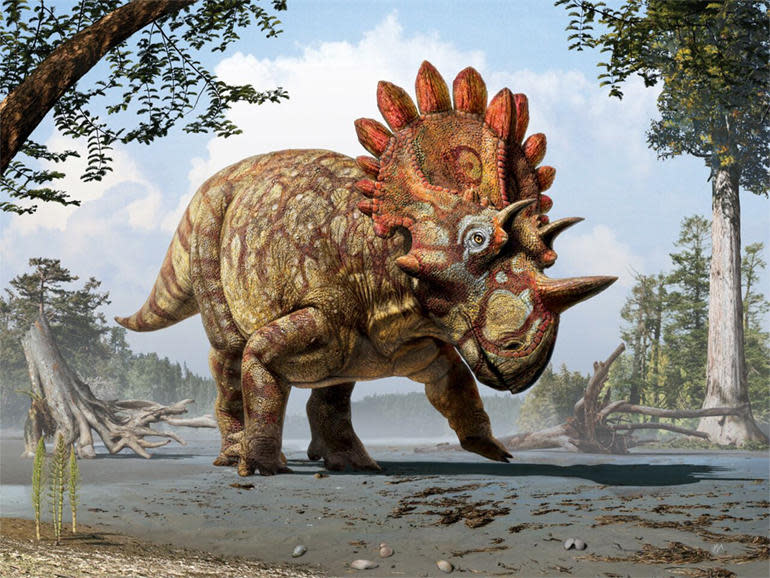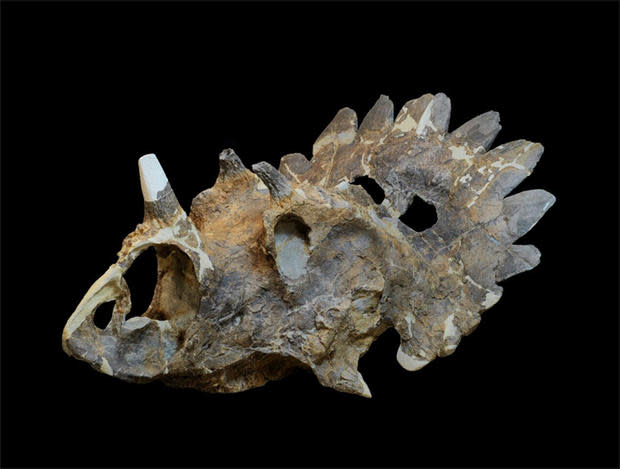Palaeontologist proposes via scientific paper describing 'Hellboy' dinosaur
This article, Palaeontologist proposes via scientific paper describing 'Hellboy' dinosaur, originally appeared on CNET.com.

Artistic reconstruction of Regaliceratops peterhewsi in the Late Cretaceous environment of Alberta, Canada. Art by Julius T. Csotonyi. Courtesy of Royal Tyrrell Museum, Drumheller, Alberta
Cupid has taken on an unlikely new form: Regaliceratops peterhewsi, a dinosaur with an unusually ornate head.
Discovered a decade ago, the dinosaur was nicknamed "Hellboy" by the palaeontologists who described it in a paper published today in the journal Current Biology. The newly described dinosaur is a relative of the Triceratops, with a similar head bearing three horns and a bone plate protruding from the rear.
It's an unusual place to look for romance, to be sure -- but an Easter egg in the paper's acknowledgements is possibly the most adorable thing you'll ever see in a scientific journal.
"C.M.B. would specifically like to highlight the ongoing and unwavering support of Lorna O'Brien," the paper's lead author, Caleb M. Brown of the Royal Tyrrell Museum of Palaeontology in Alberta, Canada wrote.
"Lorna, will you marry me?"
The dinosaur's nearly intact skull was found in a geographic region of Alberta where horned dinosaurs had not been previously discovered, which was an immediate indicator that the dinosaur was something special.

The skull of Regaliceratops peterhewsi. Photo Courtesy of Royal Tyrrell Museum, Drumheller, Alberta. Photo by Sue Sabrowski
Further study revealed two distinctive features. Its three facial horns are much smaller than those of the Triceratops, with the two brow horns described as "almost comically small." But its bony crest was the most unusual: large and ornate, with a halo of large, pentagonal plates on the edge and a central spike like, Brown said, a royal crown.
Its name, Regaliceratops peterhewsi, reflects this. Regaliceratops means "royal horned face", peterhewsi honours Peter Hews, the geologist who found the skull.
Even more interesting is the fact that the dinosaur indicates a convergence in the two groups of horned dinosaurs: the Chasmosaurines, which have a small horn over the nose, large brow horns and a large frill; and the Centrosaurines, which have a large nose horn, small brow horns and a small frill.
Regaliceratops peterhewsi, which hails from the Late Cretaceous period, is a Chasmosaurine, but it exhibits Centrosaurine features. The team will be looking for more specimens, as well as conducting digital reconstruction on the skull to learn more about the dinosaur.
As for Lorna O'Brien, she had seen a copy of the paper before it was published. She said yes, of course.
Also from CNET:


